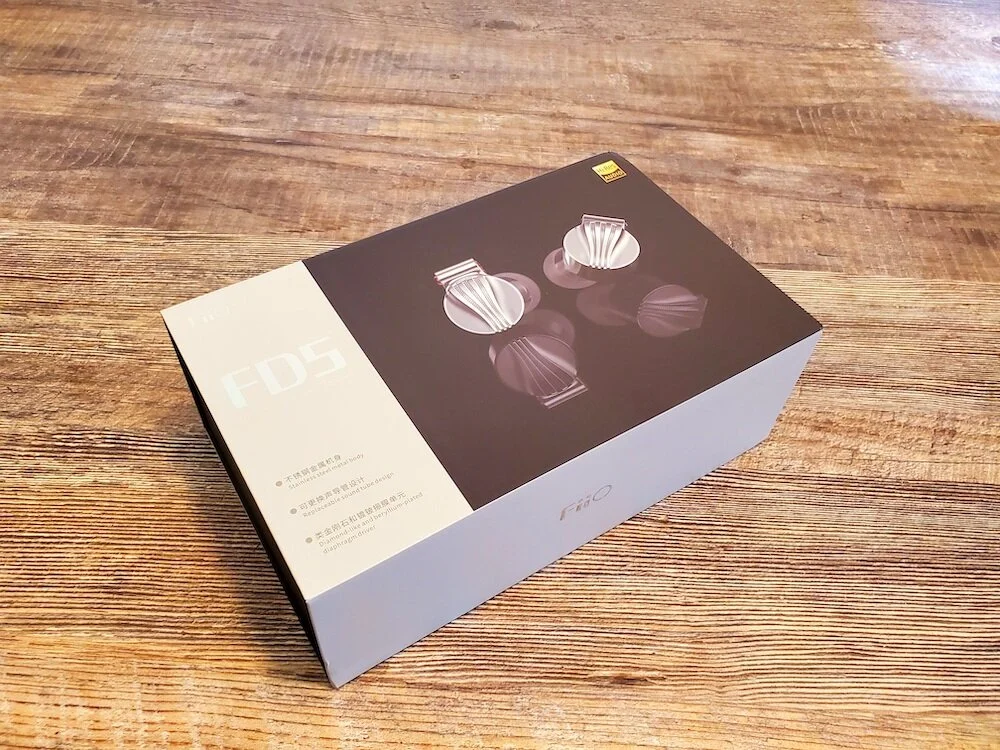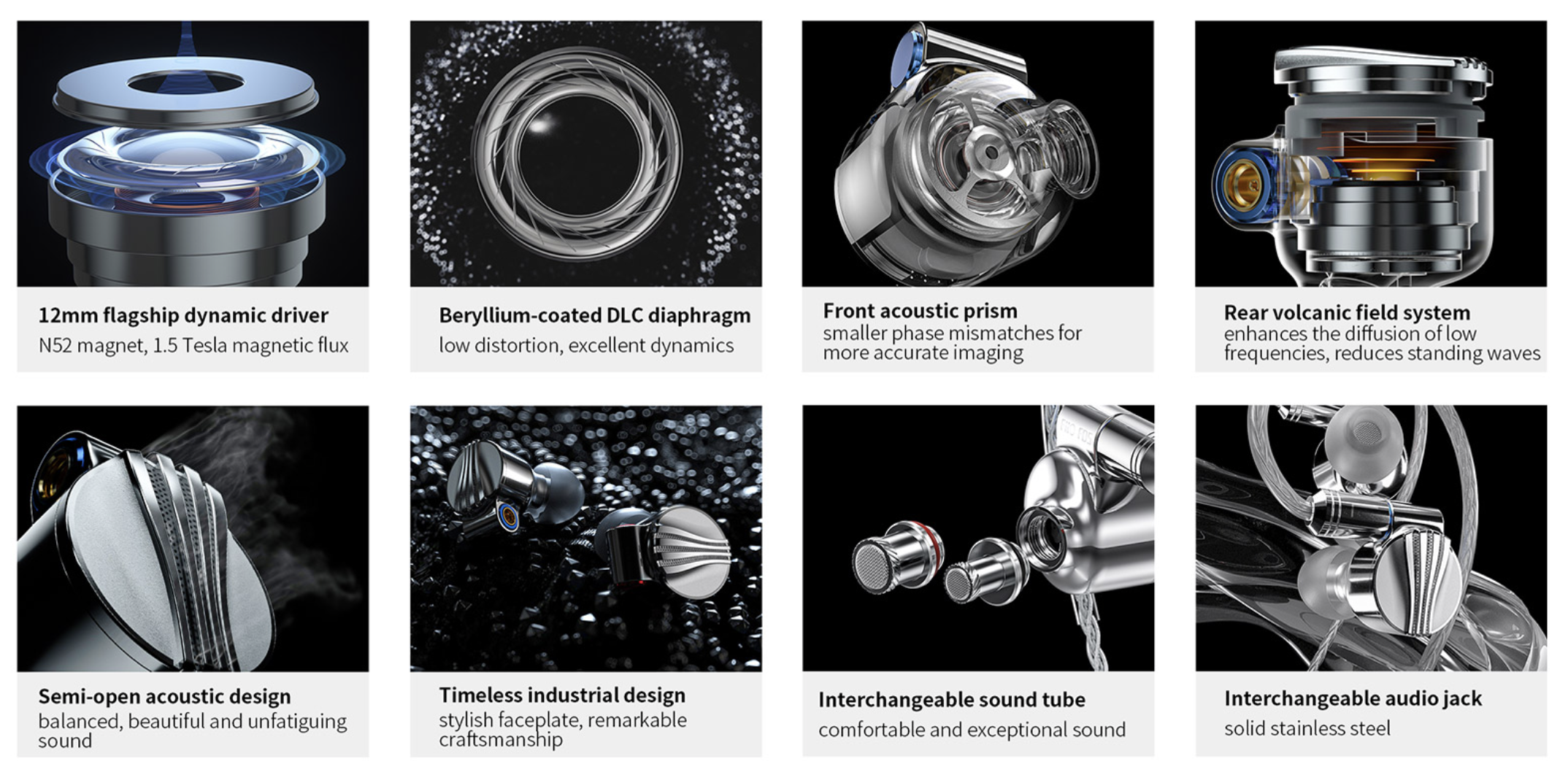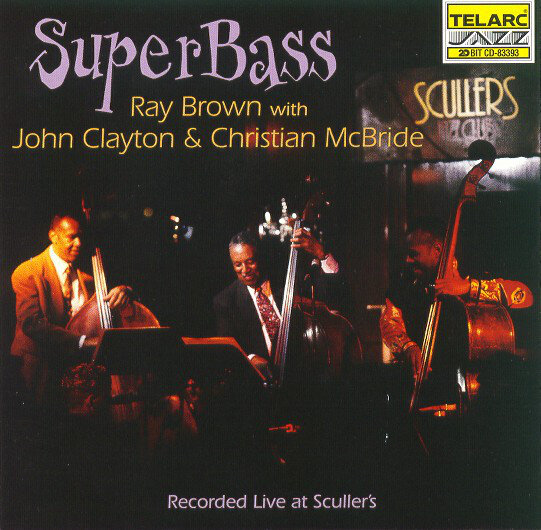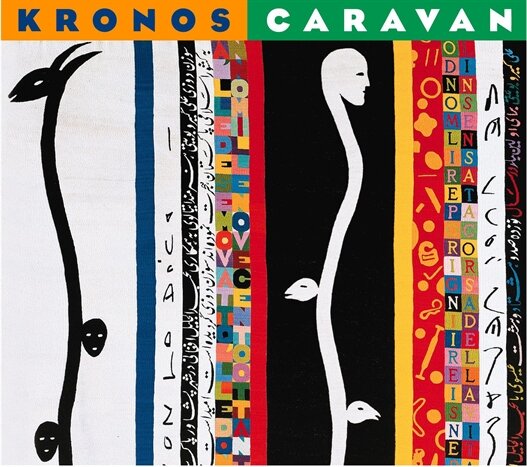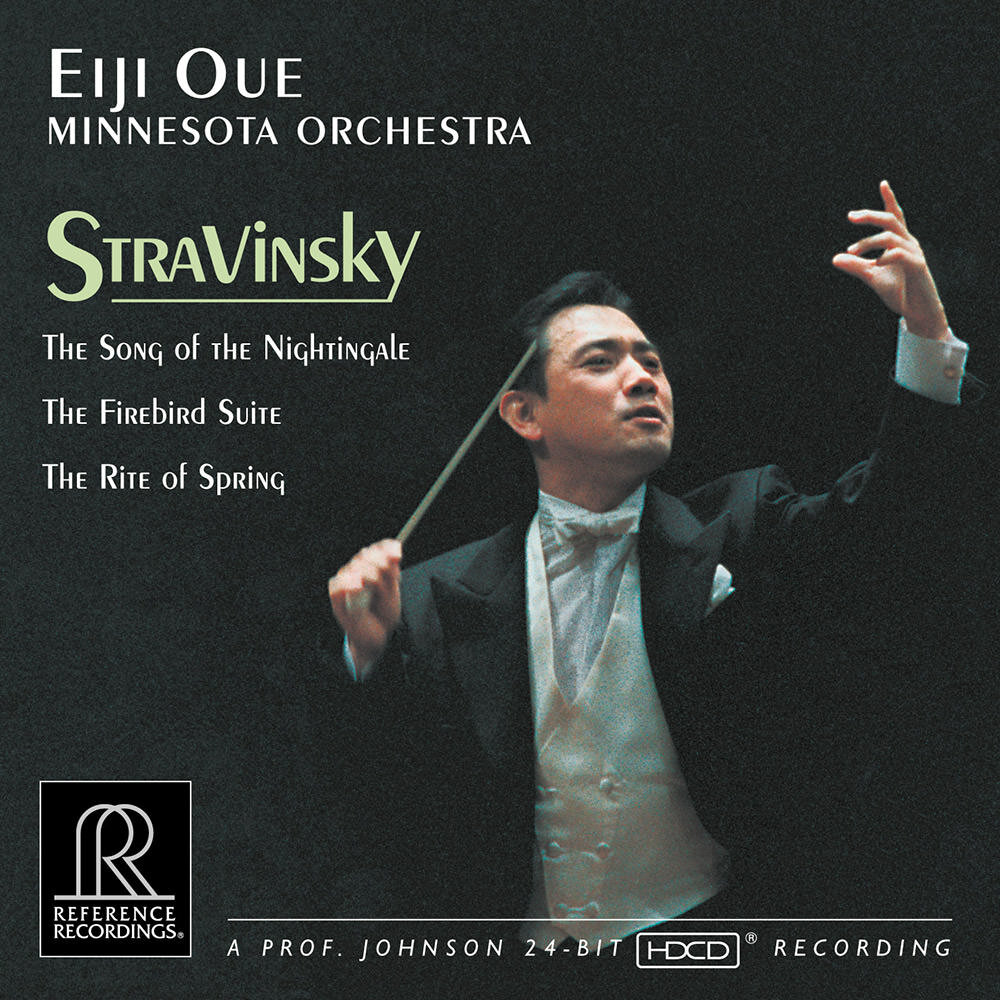FIIO FD5 - REVIEW
A $299 IEM Flagship? You bet!
I have come to know FiiO first through its FH5 ($259) In-Ear-Monitor (IEM) and then through its Q3 ($149) DAC/Amplifier. In each case the FiiO components provided great value, were incredibly well designed, and the various accessories were always quite generous. There was, of course, the fact that they consistently performed far above their price designation often competing with products at multiple their respective cost. In fact, the FH5 was listed as one of AudioKey Reviews’ Best Products of the Year in 2020, for those products under $500.
The FiiO FD5 ($299) is likewise beautifully designed, incredibly well engineered, and packaged and accessorized as though a flagship product, which happens to be the designation given it by FiiO. On its graphic and industrial design face alone, it seems to easily live up to the designation of a flagship product. However, when the actual materials—Beryllium-coated diaphragm, N52 magnets, DAIKOKU voice coil—prized for their durability are also taken into account, along with technical innovations (see below), the FiiO FD5 is a flagship in every respect. But, of course, the test of a flagship component is how it renders the music played through it. How then does the FiiO FD5 sound?
REFRAIN: Unlike most reviews, this review will be non-sequential, as it will start with how the equipment actually sounds and not the process of physically “undressing” it and/or laying out its various accoutrement, specifications, etc. Think of this review then, as a non-linear movie—Memento, Kill Bill, Pulp Fiction, Eternal Sunshine of the Spotless Mind, The Queen’s Gambit, In the Shadow of the Moon, etc—that, likewise, starts at the end and winds its way to the beginning.
The Sound
The FiiO FD5 is simply exceptional at its price point and despite initial misgivings about it being presented as a flagship at $299, those concerns were very quickly dismissed, once the music began to play. How is FiiO able to bring wonderful top to bottom extension, a nicely resolved, detailed, and natural rendering of the music, which has challenged many a company’s “flagship?” And given the price differential, it has been quite an astounding reveal. The FiiO FD5 must, in many ways, be considered a gift or an end-of-the-line product for those unable to scale the financial heights of traditional IEM flagships.
The FiiO’s volumetric cube—sound stage—is quite large and, at times, holographic, in that it spans good depth and height and width and, yet, is intimate when called to be so. Positioning and layering are also quite good as is image solidity. There is very good transparency and thus layers of detail are laid bare. Though the best and the most expensive, across this category, might, in certain instances though not all, extract more detail, nuance, and microdynamics.
The FiiO FD5 was paired with the iBasso DX220 AMP1 MkII and the songs utilized for the review were:
Joan Shelley’s Wild Indifference (Joan Shelly, No Quarter Records)
Ólafur Arnalds Árbakkinn (Island Songs I, Mercury (Universal France))
Patricia Barber Winter (Modern Cool, Koch Records)
Eiji Oue V. Infernal Dance of King Kashchey (Stravinsky, Reference Recordings)
Kronos Quarter Aaj Ki Raat—Tonight Is the Night (Kronos Caravan, Nonesuch)
Mezzanine Angel (Massive Attack, Virgin Records)
BASS
Massive Attack’s Angel (Mezzanine, Virgin Records) plays and the bass rumbles, is taunt and is clearly resolved. FiiO’s “Rear Volcanic Field System” and its Beryllium, its DLC (Diamond Like Carbon) coatings are proving themselves to be rather potent implementations and not just marketing hype in this $299 flagship. And combined, these technologies have vanquished Flagship IEMs at 10 to 15 times its cost, which given the FD5’s price point is, indeed, impressive. On Eiji Oue’s V. Infernal Dance of King Kashchey the FiiO FD5 easily found the sub-bass region and rumbled whenever required to do so and with good, clean resolution. This could not be said of many a company’s flagship product, as reviewed across this website!
Midrange
The FiiO FD5 renders a beautiful, detailed midrange with nuance and a natural tonality that is quite engaging. Joan Shelley’s Wild Indifference (Joan Shelly, No Quarter Records) plays and her voice, her tone is warm and natural, detailed and beautifully resolved. Ólafur Arnalds Árbakkinn (Island Songs I, Mercury (Universal France)) plays now and there is yet more of the same—a warm, beautiful, engaging midrange, very good resolution, and a nuance born from a wealth of macrodynamic cues, that conjures a good degree of palpability. As the strings enter they reach high with good extension and clarity, but there are those few, very few, IEM flagships that would better the FD5’s treble extension, at ten times or more the cost.
Treble+
My go to track for treble extension as well as a torture track for sibilance is Patrica Barber’s Winter (Modern Cool, Koch Records). Most if not all of the tracks on this album could, indeed, be torturous. The FD5’s resolution, clarity, and detail retrieval across this track is very good and there is more than sufficient air to bring forward a quite good simulacrum of the original event. There is, however, a wee bit of sibilance, at the highest heights of treble extension, but very few IEMs escape undiminished on this album. That the FiiO FD5’s one dynamic driver can cover the entire range so adeptly and convincingly and musical is a testament to simplicity and old school technological engineering. Further, that it so beautifully circumvents the clown-car- piling-up of Balanced Armatures (BAs) into the hollows of IEM bodies is also quite welcomed and refreshing. Bravo to FiiO!
The Wrappings and Accessories
The FiiO FD5 comes in a medium-sized, rectangular box, that is wrapped by a minimalist, clean, nicely printed, outer sleeve, with silver foil-stamping strategically placed. The colors are subdued, balanced, elegant.
The sleeve removed a textured, black, rectangular box remains, with a silver foil-stamped line drawing of the FiiO FD5, printed atop the box. Beneath the box’s lid, which lifts like a jewelry box to expose the first layer. On the first layer one finds:
The FD5
An 8-strand, monocrystalline, silver-plated, copper MMC terminated cable (as attached to the FD5)
An HB5 storage case
Beneath the first layer, on the second layer are found:
Interchangeable audio jacks: 2.5mm, 3.5mm, and 4.4mm
Interchangeable sound tubes—2 (1-large, 1-small)
An MMCX ASSIST cable detachment tool
Eartips:
6-bass eartips (S, M, L)
6-balanced eartips (S, M, L)
6-vocal eartips (S, M, L)
2-triple-flange tips (S, L)
4-foam tips (S, M, L)
A cleaning brush
The sum of accessories—tools (detachment, cleaning), interchangeable jacks/tubes, eartips—and, of course, the FD5 IEM represent incredible value, innovation, and technology far above the FiiO FD5’s current pricing.
FiiO has acquitted itself impeccably with its FD5 $299 flagship, that cover all the bases that flagships are to cover from a striking, industrially-design aesthetic to a technological sophistication, that renders music beautifully and naturally. Music, by the way, that challenges many IEMs regardless of the number of zeroes within their respective price points.
Design—Look, Feel, and technology
The FiiO FD5 sports a seemingly sculpted, artistically designed, stainless steel faceplate, that adheres to a polished chrome body. It would be easy to mistake the small FD5 IEM as a well crafted, expensive piece of jewelry. That it is priced at $299 is rather amazing.
The FD5 is a form follows function design wherein materials—Beryllium, stainless steel, DAIKOKU copper, diamond-like carbon—appear to serve dual purposes, which range from “decreasing internal harmonic distortion” to “reducing unwanted resonances and reflections of sound waves” to providing “highly detailed, yet rich and lifelike sound.” Our “Sound” section above proves that FiiO’s marketing has, indeed, matched the functionality of the FD5.
The industrial design of the FiiO FD5 is truly exceptional and without peer at its price category and far above its price category. Such exacting attention to detail of the FD5 and its wealth of included components speaks volumes to a cost/benefit ratio that is decidedly in the favor of the consumer, a rare thing indeed.
FUNCTIONALITY
The FiiO FD5 is a semi-open, dynamic-driver design, with a Beryllium-coated, Diamond-Like-Carbon (DLC) diaphragm. The FD5 also utilizes what FiiO refers to as three “revolutionary acoustic design breakthroughs.” Said breakthroughs being its:
Beryllium-coated, DLC diaphragm
Rear volcanic field system
Front acoustic prism
FiiO’s Beryllium-coated, DLC diaphragm, due to its rigidity, is said to be “more responsive to voice coil movement for less distortion and more accurate reproduction of sound.” Given our “Sound” section above this also seems to be a bonafide statement, as the FD5 competed peer-to-peer with IEMs, consistently, at the top of the incredibly expensive IEM hierarchy, besting a good number of them.
The FiiO FD5’s rear “volcanic field” system, a rather unique system in IEMs, as coupled to a semi-open design was employed for the “efficient diffusion of standing waves and to reduce overall distortion across the bass region. The benefits of the volcanic field system as allied to the semi-open design—the reduction of air pressure on one’s ears and fatigue free listening for extended periods of time.”
While the backend of the FD5 features the “volcanic field” system, the front-end of the FD5 features its complement—an acoustic prism developed for the IEM that, “addresses the issues which come with the time delay between various sound waves.” Further as FiiO states:
“By installing a conical device close to the front end of the driver diaphragm, we can precisely control how the sound waves travel in the sound tube-bringing benefits such as eliminating high frequency standing waves and enhancing overall sound wave diffusion.”
And in this age and time it is rather unique in that the FiiO FD5 utilizes but a single driver and not sixteen or eighteen or twenty, as appears to be all the rage. It is a less is more approach, that is consistently confirmed in our listening test where 1 to 2 driver IEMs have regularly bested multi-driver BA and BA/Hybrid designs (see Obravo).
Additionally, FiiO has brought to market a rather unique audio jack connector technology, that allows for the mechanical exchange of one tip for another via a spin down (up), plug in, spin up (down) and play method. There is also the ability to exchange sound tubes, which can alter the FD5’s voice. As FiiO states regarding the sound tubes:
“The large sound tubes balanced, while the small sound tube presents a lively and more bass-focused sound.”
The Specifications
FiiO FD5
Headphone type: In-ear IEM
Impedance: 32Ω @ 1kHz
Cable: 8 strand monocrystalline silver-plated copper cable
Frequency response: 10Hz – 40kHz
Sensitivity: 109db @ 1mW
Cable length: 120cm
Driver: 12mm Beryllium-Coated Diamond-Like-Carbon (DLC) dynamic driver
Max Input Power: 100mW
Weight: 11 Grams
Drivability
The FiiO FD5’s low impedance (32Ω -Ohms) and a high sensitivity (109dB) allow the FD5’s to be driven very easily and, as a result, they work well with numerous devices ranging from smartphones to computers to the entire AudioQuest DragonFly family to DAPs to desktop systems.
Comparisons
It came down this time to three songs that would be utilized to differentiate the various IEMs. The comparisons were done using the following tracks/songs:
Vilde Frang’s Violin Concerto in D Major Op. 35 (Britten Korngold, Warner Classics)
Kandace Springs’ 6.68 (Indigo, Blue Note)
Eiji Oue’s Firebird Suite V. Infernal Dance of King Kashchey (Stravinsky, Reference Recordings)
The various IEMs were partnered to the iBasso DX220/AMP1 MkII.
MMR GAE BOLG ($1199)
The MMR GaeBolg brought a transparency and resolution to Vilde’s Violin Concerto in D Major Op. 35 that opened a window on the performance and that brought great resolution, extension, and was beautifully engaging. The GaeBolg’s treble performance was not rolled off, nor was it harsh or strident. The FD5’s treble was as transparent and engaging, but was a wee bit less natural than the GaeBolg. On Kandace Springs 6.68 the MMR GaeBolg unveiled excellent tone/timbre, and provided for a weighty lower midrange foundation, that was very addictive. The FD5 brought a weight to the lower midrange, however, that the GaeBolg’s could not match. And Kandace’s voice on this track was palpable and ethereal and served equally well by both the GaeBolg and the FD5. There was a bit more warmth from the GaeBolg that was quite addictive. The GaeBolg bass weight, however, was not the match for the FD5 which easily found the sub-bass region and rumbled when required on the Eiji Oue’s V. Infernal Dance of King Kashchey.
NOBLE AUDIO SULTAN ($2900):
The Sultan with foam tips will bring a good deal of extended treble and will not induce listening fatigue. The FiiO FD5’s treble never induced listening fatigue and it was as open and extended as the Sultan and never harsh. The Sultan’s midrange was not as natural or as engaging as was the FD5’s and a sense of the three dimensionality was lost with the Sultan. In terms of bass response or sub-bass reach the FD5 IEMs was able to plumb the depths necessary for rumble and to grasp the Holy-Bass-Head-Grail, wherein the Sultan was not, decidedly.
OBRAVO EAMT-2C ($3000):
There are few IEMs, save for the EAMT-2C’s big brother the oBravo RA-C-CU, that can match the EAMT-2C's transparent, musical rendering, natural tone/timbre across any part of the frequency spectrum. From Vilde Frang’s Violin Concerto in D Major Op. 35 to Kandace Spring’s 6.68 to Eiji Oue’s V. Infernal Dance of King Kashchey the EAMT-2C was stellar and without peer. Its natural tone/timbre, its texture, and its beautifully extended and detailed treble set the benchmark for this comparison. Across all three tracks its soundstage was both deep and wide, its positioning solid. Kandace’s voice was natural of a beautifully delicious tonality and ethereal. It was as if these tracks were rendered closer to their analog tapes, than any other IEM dare. And there was rumble and a taunt, deep bass, as if the EAMT-2C grabbed the sub-bass by the collar, to look it in the eye. Only the FD5, in terms of bass/sub-bass, could be said to be on the same continent. However, in other areas the FD5 could simply not compete with the EAMT-2C.
Compatibility (Synergy)
The FiiO FD5 worked with a broad range of DAPs and DAC/Amps and DAC dongles to great affect and brought its full game with all comers, which is in and of itself quite rare. It’s best synergies, however, were found with its FiiO sibling the FiiO Q3, the iBassso DX220 AMP1 MkII, the AudioQuest Cobalt, and the Shanling M8.
Conclusion
The FiiO FD5 from a design, aesthetic, build, and operational perspective is, indeed, a flagship product. It also provides a wealth of accessories that few flagships have, to date, matched. And then, of course, there are the novelties—the ability to switch out both terminations and sound tubes, which provide further proof of its status—flagship.
As you will note, only other flagships were tested against the FD5, as its similarly-priced kin could not, in the majority of cases, compete. And finally, there are all the various accoutrement that come with the $299 FiiO’s FD5 Flagship, that represent great value and a true gift for the customer.
If you’re looking for a flagship IEM but don’t have the money traditionally associated with owning one, then your journey may well end with the FiiO FD5. And one listen, after it is properly burned in, will find you with an IEM of tremendous value and impressive, musical talent. We very highly recommend the FiiO FD5!
Pros: Cost. Performance. Build quality. Musicality, Bass response. Treble extension.
Cons: ?
The System(s)
1.
iBasso DX220 AMP1 MkII
2.
Shanling M8
3.
FiiO Q3
4.
AudioQuest Cobalt
THE MUSIC
The Company
FIIO
FIIO FD5: Retail $299
FIIO
2/F, F Building, Hougang Industrial Zone,
Shigang Village, Huangshi West Road, Baiyun District,
Guangzhou City, 510430, China.
pr@fiio.com

